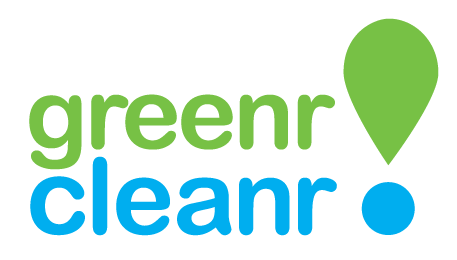How to Read Green Cleaning Certification and Labels
Green cleaning certifications and labels play a crucial role in helping consumers make informed choices about environmentally friendly cleaning products. Understanding these certifications and labels empowers individuals to select products that align with their sustainability goals. In this article, we will explore the key aspects of reading green cleaning certifications and labels, providing you with the knowledge to make eco-conscious decisions.
Understanding Green Cleaning Certifications
Green cleaning certifications are awarded to products that meet specific environmental standards. Several certification programs exist, each with its own criteria and standards. Familiarizing yourself with these programs will help you decipher the labels and symbols associated with green cleaning products.
For instance, the Green Seal certification ensures that products have undergone rigorous testing to meet environmental and performance criteria. Similarly, the EcoLogo certification focuses on reducing environmental impacts throughout a product's lifecycle.
Decoding Green Cleaning Labels
Green cleaning labels contain valuable information about a product's environmental attributes and ingredients. By understanding the different components of these labels, you can make more informed purchasing decisions.
One key aspect to consider is the ingredient list. Look for clear indications of eco-friendly ingredients, such as plant-based surfactants or natural fragrances. Avoid products that contain harmful substances like phosphates or chlorine bleach.
Additionally, familiarize yourself with common green cleaning labels, such as "Certified Organic," "Biodegradable," or "Cradle to Cradle Certified." These labels provide insights into a product's sustainability and environmental impact.
Interpreting Green Cleaning Certification Logos
Green cleaning certification logos are symbols of authenticity and credibility. They signify that a product has met specific environmental standards set by the certification program. Understanding these logos will help you assess a product's eco-friendly claims more effectively.
For example, the USDA Certified Biobased Product logo indicates the percentage of biobased content in a product. The higher the percentage, the more sustainable the product is.
Comparing Green Cleaning Certifications
Comparing different green cleaning certifications allows you to evaluate their strengths and weaknesses. It's essential to understand the specific criteria and standards of each certification program to make an informed choice.
For instance, while the GreenGuard certification focuses on indoor air quality, the Safer Choice label ensures that products are safe for human health and the environment.
Consider your priorities and values when comparing certifications. Some may emphasize renewable resources, while others focus on reduced packaging waste or water conservation. Choose certifications that align with your sustainability goals.
How to Read Green Cleaning Certification Documents
Green cleaning certification documents provide in-depth information about a product's compliance with environmental standards. Reading these documents can give you a comprehensive understanding of a certification's requirements.
Pay attention to sections such as "Certification Criteria" and "Testing Methods" to understand the specific benchmarks a product must meet. Look for clarity and transparency in the documentation to ensure the certification program maintains high standards.
Tips for Evaluating Green Cleaning Products
When evaluating green cleaning products, it's essential to consider multiple factors. Here are some tips to guide your decision-making process:
Look for third-party certifications from reputable organizations.
Consider the product's performance and effectiveness in addition to its environmental attributes.
Research the company's sustainability practices and commitment to transparency.
Read customer reviews and testimonials to gauge the product's effectiveness and reliability.
Compare prices and availability to find the best eco-friendly options within your budget.
Resources for Further Information
To further expand your knowledge of green cleaning certifications and labels, here are some helpful resources:
These resources offer additional insights and guidance for making environmentally conscious choices.
Frequently Asked Questions (FAQs)
1. What are the benefits of using green cleaning products?
Using green cleaning products offers several benefits. They are typically safer for human health and the environment, as they contain fewer harmful chemicals. Green cleaning products also help reduce air and water pollution, promote sustainable practices, and contribute to a healthier indoor environment.
2. Do all green cleaning products have certifications or labels?
Not all green cleaning products carry certifications or labels. However, certifications provide an added level of assurance that a product has met specific environmental standards. Look for recognizable certifications on product labels to make more informed choices.
3. Are green cleaning products more expensive than conventional products?
While some green cleaning products may have a higher upfront cost, they often provide better value in the long run. They tend to be concentrated, requiring less product per use. Moreover, investing in environmentally friendly options contributes to sustainability efforts and helps protect our planet's resources in the long term.
4. Can I trust a product labeled as "natural" or "eco-friendly" without certifications?
Labels such as "natural" or "eco-friendly" are not regulated terms and can be used loosely. Without certifications or third-party verification, it's challenging to determine the validity of these claims. Look for specific certifications like Green Seal or EcoLogo to ensure a product meets established environmental standards.
5. Are green cleaning products as effective as conventional cleaning products?
Green cleaning products have come a long way in terms of effectiveness. Many eco-friendly alternatives are formulated to provide comparable results to conventional cleaning products. It's important to read product reviews and consider factors like performance, user feedback, and specific cleaning needs when selecting green cleaning products.
Conclusion
In conclusion, understanding how to read green cleaning certifications and labels is crucial for making informed choices about eco-friendly cleaning products. By familiarizing yourself with certification programs, decoding labels, and comparing certifications, you can confidently select products that align with your sustainability values. Remember to evaluate certification documents and consider various factors when evaluating green cleaning products. Armed with this knowledge, you can contribute to a cleaner and greener future.
